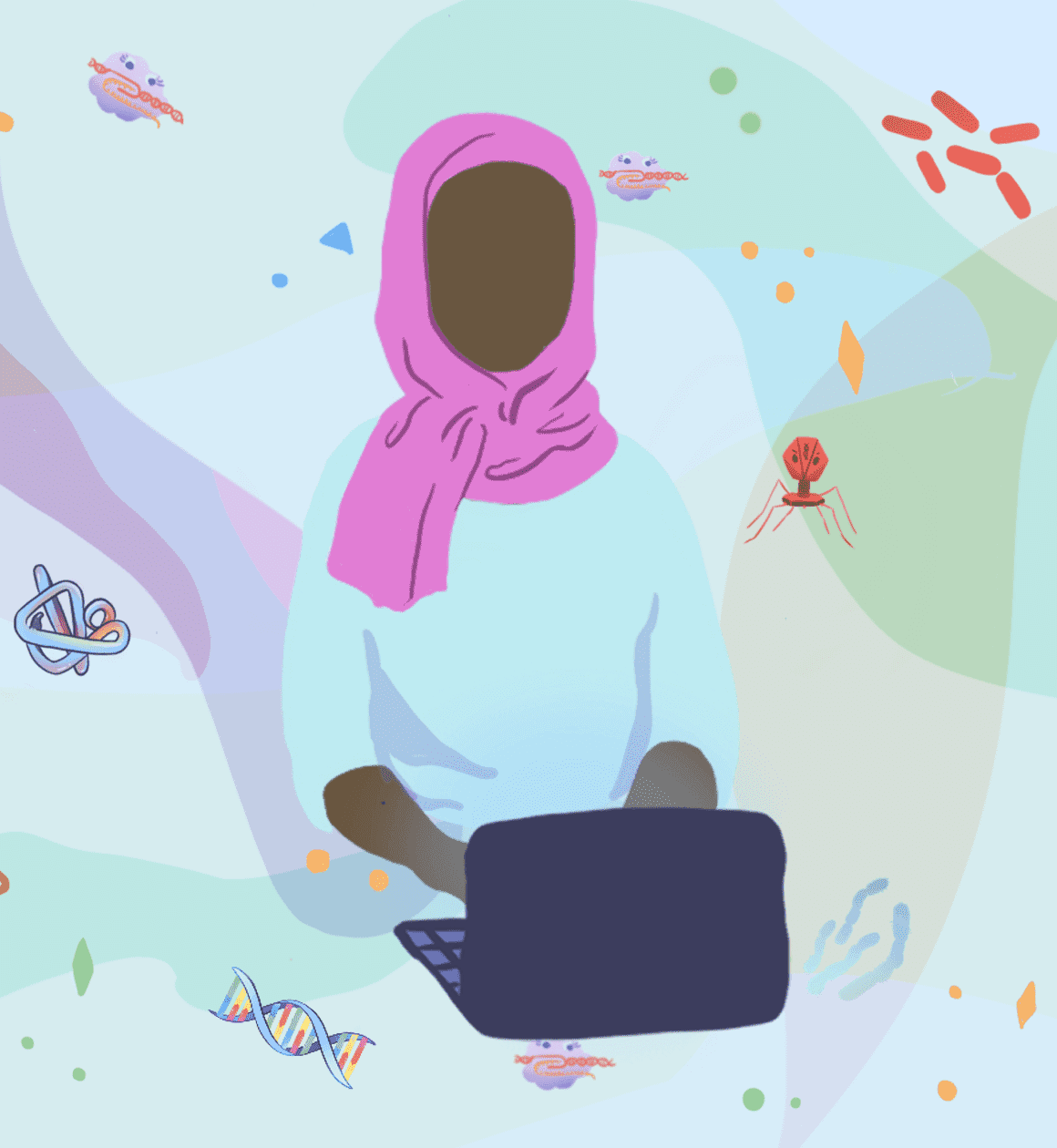In this section of CRISPR Made Simple, learn how CRISPR is being used to prevent and treat diseases.
-
Key Takeaways
Genetic diseases are caused by harmful gene variants. CRISPR can be used to develop treatments for genetic diseases, which are tested in clinical trials.
-
Vocabulary
Gene variant, genetic disease, clinical trial
Why do people get sick?
Organisms of the same species share the same genes. They also share most of the same sequence of DNA letters that make those genes. That's why most humans enjoy the same basic things, like playing games with our friends, watching a sunset, or eating a delicious meal with our families. In fact, our DNA is 99.9% identical!
What's the 0.1%? Humans and other organisms sometimes have different versions, or variants, of a gene. Gene variants are changes in some of the DNA letters of a gene.
Many gene variants have no effect. Others create some of the interesting differences we see between people, like whether our hair is curly, coiled, wavy, or straight. And some gene variants are harmful, leading to diseases. Diseases that are caused by harmful gene variants are called genetic diseases.
You may have heard of something that "runs in the family" — this is a way of talking about something that is passed down from parents to children. Brown eyes and big smiles can run in a family. Harmful gene variants that cause genetic diseases can run in the family, too. Besides running in the family, genetic diseases can also come from new changes in DNA without being passed down.
Gene variants in just one gene can cause some genetic diseases. Sickle cell disease is one example. Gene variants in many genes cause other diseases. Multiple sclerosis (MS) is one example. For diseases like MS, the effects of different variations add up. Together, they make someone more likely to get the disease.
While gene variants cause some diseases, other factors can lead to diseases, too. People exposed to air pollution are more likely to develop asthma. This is an example of an environmental factor contributing to disease. Health habits like what you eat and how much exercise you get contribute to other diseases. Type II diabetes is one example. Virus and bacteria infections cause other diseases, like the common cold. And the cause of many diseases is still unknown.
How can CRISPR treat genetic diseases?
Scientists use CRISPR to edit DNA. If a harmful DNA variant causes a disease, scientists might be able to use CRISPR to fix the problem. They could use CRISPR to edit the gene by changing the DNA from the harmful variant to a healthy variant. This could potentially prevent or cure a genetic disease.
Doctors first began testing this kind of therapy on people with sickle cell disease in 2019. They used CRISPR to edit the cells of Victoria Gray, an American woman with sickle cell disease.
So far, Victoria is doing great and feeling much better! Learn about her story here.
What can CRISPR do?
Right now, researchers are testing CRISPR treatments for diseases caused by variations in a single gene. Diseases caused by changes in more than one gene might be treated with gene editing in the future. Editing multiple genes at once is a lot tougher than editing just one!
Creating the right CRISPR tool to edit a gene is just one piece of the puzzle. To edit a patient’s cells, scientists have to figure out how to get CRISPR into the cell! And, they have to figure out how to get it only into the cells they want to edit, and leave the rest of the cells alone.
Genetic diseases are caused by harmful gene variants in our DNA. But what about non-genetic diseases? Could they be treated with CRISPR?
Scientists might be able to treat some non-genetic diseases with gene editing. When scientists know what causes a disease, they may be able to create genetic therapies to treat it, even if the disease isn’t genetic. For example, scientists are studying if CRISPR can be used to prevent COVID-19 infections.
How do we test new medicines?
Exciting discoveries don't immediately turn in new disease treatments. In fact, it’s a long process to get from discoveries in the lab to medicine in a doctor’s office.
When scientists have an idea for a new treatment, they do lots of lab experiments to test it and make it better. They must show that their treatment works safely in lab animals and in human cells outside of the body. This alone takes years! After that, they can start a clinical trial. A clinical trial is a test with human patients who volunteer to participate. A clinical trial tests whether a treatment works and is safe in a real human patient.
Clinical trials often take a few years to complete. In total, it can take 10–15 years from testing a treatment in animals to getting it from your doctor.
Summary
Some diseases are caused by harmful DNA variants. These are called genetic diseases. Others diseases are caused by the environment, health habits, germs, or some combination of those factors and gene variants. CRISPR-based gene editing might be able to prevent or treat genetic diseases by changing harmful DNA variants into healthy DNA variants. CRISPR might also be used to treat non-genetic diseases. New disease treatments are tested in clinical trials. Clinical trials make sure that only treatments that are safe and effective reach patients.
Think about it!
Illustration use and attribution
The illustrations for CRISPR Made Simple are licensed under a Creative Commons Attribution-NonCommercial-ShareAlike 4.0 International License, and can be used and adapted for non-commercial, educational purposes. ALL modifications and uses must follow the CC BY-NC-SA 4.0 license.

